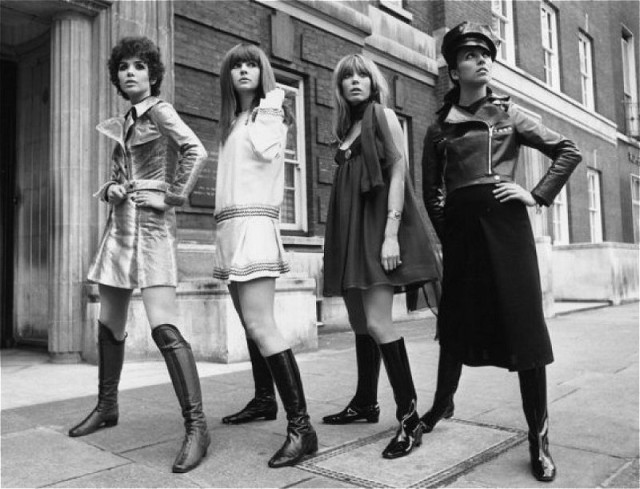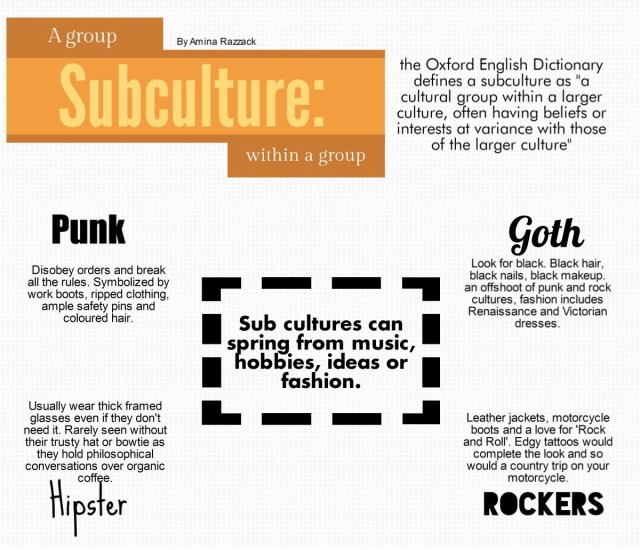My life, My jeans.
When it comes to fashion, there are usually two widely differing stances (no, I’m not talking about the movie). One set of people will love fashion and the culture surrounding it, while the others will turn their nose up at it, calling it frivolous or unnecessary. These people often forget that even while they say they don’t care about fashion, they choose their clothes every morning based on how they feel or how they want to look.
Fashion is mistakenly believed to be confined to runways and fashion weeks, but in fact fashion is a social phenomenon. It helps us depict information about ourselves in a visual way that can be understood by the viewer in a single glance. We can convey information about or demographic, religion, economic status and social position through our clothes and how we dress.
“Clothes make a man, naked people have little or no influence on society.”
-Mark Twain
Life is a Runway
Fashion itself is a reflection of social, economic, political and cultural changes. Even people in the 1700’s would pore over fashion magazines. Fashion is also related to identification and tradition, eg. judges wear robes, brides wear lehengas, doctors wear coats, soldiers wear uniforms.
Clothing has also been important in historical changes, in 19th century England, it was used as a political weapon when people were banned from buying or wearing clothing made in France. In Communist countries, uniforms were used to abolish class and race distinctions. In pre-independent India, local khadi was used as a symbol for economic self-reliance.
It is impossible to ignore fashion. Fashion is also a way to gauge how society feels about itself. During major historical events in global history, fashion has changed to reflect the times. Clothing styles during the Great Depression, the Swingin’ Sixties, and Retro era have been shaped by societal moods and at the same time shapedthem as well.
During the World War era, women took to industry to provide for their families.
This led to the acceptability of shorter clothing and fitted trousers for women.
‘Fake’ fashion can never survive in a society that doesn’t accept it (The bubble skirt. Good God).
Fashion is also a reflection of modern ethics. In Victorian England, it would have been scandalous for a woman to expose skin even just above the ankle (gasp).
Devil Wears Prada
The fashion business is one of the largest in the world. It works at multiple layers that can originate from a weaver in India all the way to a fashion house in New York. It employs hundreds of thousands of people who are involved in buying, selling and production of materials, magazines, giving us ideas on what to wear that we receive consciously or unconsciously. Once it would be that a handful of influential people could start trends or dictate the clothes we wore, musicians, cultural icons, political figures and top designers. However, in today’s interconnected world, there are many outside factors that influence our choices as well. Modern fashion has led to a phenomenon of branding. Entrepreneurs are able to fill in demands of niche consumers, target people with certain lifestyles or even create a demand by themselves.
The Crazy Ones
Aside from mainstream fashion, there are fashion subcultures influenced by a particular idea or movement. Punk, lolita, hipster, floral, hippie, Harajuku and rock culture are few of the trends that sparked off their own fashion cults. Similar to this is street fashion. What differentiates street from high end fashion is that street fashion takes place at a grassroots level and its evolution is very organic as it is mostly an extension of self-expression, usually seen in urban centres.
So we can see that fashion is crucial to us as humans, whether we are aware of it or not.




































